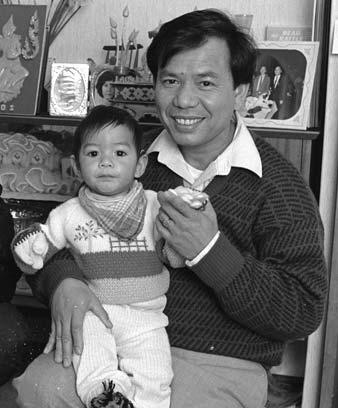Story summary
Immigration: escaping the Killing Fields
Most Laotians came to New Zealand as refugees in the years after the Communist Pathet Lao party overthrew the country's 600-year-old monarchy. A rule of terror followed; between 1975 and 1995, 300,000 people were tortured and killed. During this time, thousands fled across the border into Thailand, living in camps until they could be resettled in other countries.
New Zealand agreed to accommodate 70 families in 1977, and a further 239 individuals in the early 1980s. Arriving in Auckland, the new arrivals were given a place to live and English lessons.
As the political situation in Laos gradually improved, fewer came to New Zealand as refugees. Recent immigrants have arrived as part of the family reunification scheme.
Community and culture
The population has generally fitted in well, while still keeping their cultural identity and religion. But adapting to a new life was difficult; although volunteer sponsors provided support, Laotians struggled to overcome feelings of grief, and to find meaningful work.
Lao community associations have provided important social and cultural links. The Xao Lao Association in Wellington and the Wat Lao Association in Auckland built Buddhist temples and brought Lao monks to New Zealand. Communities have also formed traditional dancing groups, and increasingly participate in cultural festivals around the country.





